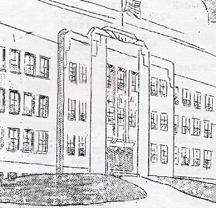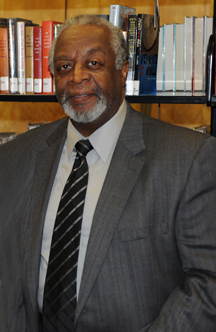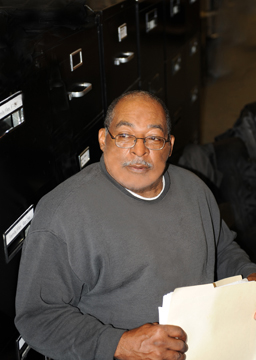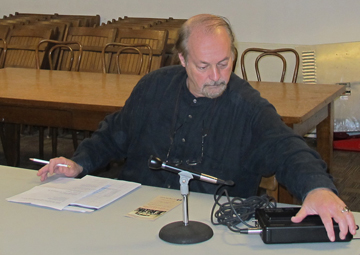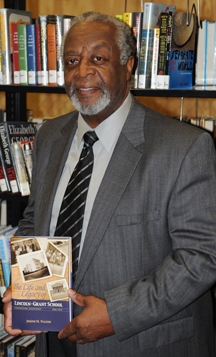

Curator's Statement |
||||||||
|
An excerpt from Joseph M. Walton’s July 2008 poem, inspired by the 50th anniversary celebration of the William-Grant High School Class of 1958: The Reunion by Joseph M. Walton “We shared a common history from a segregated past, ‘Separate but equal?’ A dubious question. Why separate people according to race, “We hold these truths . . .’ ‘ . . . And justice for all.’ Racial patterns changed slowly as the themes of yesterday Our stories will then exist in the written word, For future generations, the lessons from the past |
|||||||
As a researcher, curator, and archivist, I have always hoped that my work on the Secondary School Study was providing some form of service for those school alumni and local community organizations that I have been visiting during the past years. My travels to Covington, however, proved otherwise—those involved with William Grant High School materials were providing a service for me—indeed, “lessons from the past” that have been indelibly printed and will always last. I have “lingered” over completing this web exhibition—an example of what I term “advocacy research," in part, because each of my three visits to the Covington-Cincinnati area provided me with encouragement and a further commitment for the importance and significance of this project on the Black High School Study.
The Covington-Cincinnati research community graciously came forth and provided help in many different ways. Mr. Theodore Harris and Dr. Joseph Walton corresponded with me for months and, in what proved to be one of the kindest gestures during my years of research, Mr. Harris brought a precious and quite cumbersome, oversized framed graduation portrait to the Mary Ann Mongan Library for my examination. Similarly, my first contact with the Covington community, a query to Suzann Gettys, Neighborhood Services Coordinator for Covington’s Economic Development & Community Relations Department, brought forth a kind response (and I will add that some Chamber administrators at other research sites never bothered to respond to my formal correspondence). My first query to Scott Gampfer, Director of History Collections at the Cincinnati Museum Center, inspired by his fantastic exhibition, “Strength Within: Evaluating Education in America,” led to kind and thoughtful responses. And, similarly, both Elaine Kuhn, Kentucky History and Genealogy Services Coordinator for the Kenton County Public Library, and Lois Hamill, archivist for The Mary Northington African American Heritage Collection at Northern Kentucky University, provided that extra help that allowed me to examine additional materials and documents that I would not otherwise find. Such help from professional archivists and librarians, while not unique, extended beyond any expectations, and such kindness continued with all who participated in the oral history interviews as well as those who assisted with the venues: David Dukart of the Pleasant Ridge Library in Cincinnati went above and beyond my expectations as did the wonderful and good-natured John Stevens, manager of a Perkins Pancake House in Cincinnati, becoming interested in and enthused about this research.
At times I thought that the feelings of warmth arose from a return to my native state of Ohio as well as the joy of seeing my mentor, Dr. Timothy Leonard, professor emeritus of Saint Xavier University, who had returned to his family home of Cincinnati. Indeed, I do feel that the patter of questions and the direction of the interviews may have been more understandable since I was once an Ohioan (and my conversations with Tim, as always, guided the nature of my oral history interviews with the Grant alumni). Yet, I now believe that my acceptance was primarily a benefit from the fine scholarship of The Life and Legacy of Lincoln-Grant School by Dr. Walton. While his glorious school history remained focused on the immediate community and state of Kentucky rather than branching off and attending to Rockefeller Foundation and General Education Board activities, the archival community had come to realize the significance of the stories of the Grant High School students and the important of documentation so that, as Dr. Walton reminds us, |
||||||||
“Our stories will then exist in the written word,
I hope that the Museum of Education’s web exhibition brings more attention to Dr. Walton’s research and that this web exhibition, in some way, brings new understanding to the progressive education tradition among experimental Black schools during the 1940s. Craig Kridel |
||||||||

an institutional member of the International Coalition of Sites of Conscience
Museumofed@gmail.com

